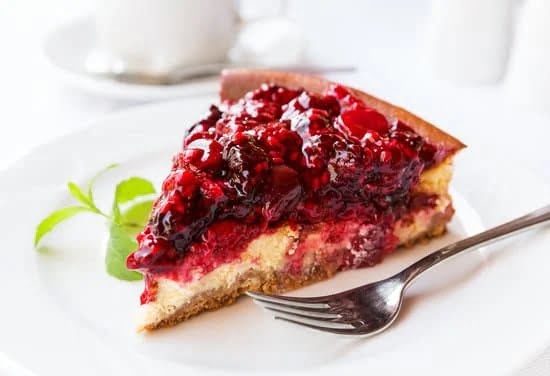Are you looking to add a unique and delicious touch to your cakes? One great way to do so is by decorating them with nuts.
Whether you’re a baking enthusiast or a professional pastry chef, incorporating nuts into your cake decoration can elevate the overall flavor and appearance of your creations. In this article, we will explore the art of decorating cakes with nuts, including the types of nuts that work best, tips and tricks for preparing your cake for nut decoration, step-by-step tutorials on applying nuts to your cake, creative ways to use nuts as decorations, and much more.
Adding nuts to your cake decoration not only enhances its visual appeal but also provides an added crunch and depth of flavor. From almonds to pecans, walnuts, and pistachios, there are numerous options for incorporating nuts into your cake designs. Depending on the theme of your cake or the flavor profile you’re aiming for, certain types of nuts may be more suitable than others.
Before diving into the various ways to decorate cakes with nuts, it’s important to prepare the cake itself for nut decoration. This involves ensuring that the surface is appropriately textured and possibly adding a layer of frosting or other binding agent that will help the nuts adhere to the cake.
Additionally, mastering the technique for applying the nuts in an aesthetically pleasing manner is key to achieving professional-looking results. So get ready to learn everything you need to know about how to decorate cakes with nuts.
Types of Nuts for Cake Decoration
When it comes to decorating cakes with nuts, there are a variety of options to choose from. Different types of nuts can add texture, flavor, and visual appeal to your cakes. Some popular choices for nut decoration include almonds, pecans, walnuts, pistachios, and hazelnuts. Each type of nut brings its own unique characteristics to the table.
Almonds are often used in cake decoration due to their delicate flavor and crunch. They can be sliced, chopped, or slivered and used to create intricate designs on the surface of the cake. Pecans and walnuts are great for adding a rich, earthy flavor and can be used whole or chopped for decorating.
Pistachios offer a pop of bright green color and a slightly sweet taste, perfect for adding visual interest to your cakes. Hazelnuts bring a rich nuttiness that pairs well with chocolate cakes.
It’s important to consider the flavor profile of your cake when choosing which nuts to use for decoration. For example, if you’re making a citrus-flavored cake, you might want to consider using pistachios for their vibrant color and subtle sweetness. On the other hand, if you’re making a spiced carrot cake, pecans or walnuts could be the perfect choice.
Below is an example of how I’ve incorporated some relevant data into a HTML table:
| Type of Nut | Characteristics |
|---|---|
| Almonds | Delicate flavor and crunch; can be sliced or chopped for intricate designs |
| Pecans & Walnuts | Adds rich, earthy flavor; can be used whole or chopped for decorating |
| Pistachios | Bright green color and slightly sweet taste; adds visual interest |
Preparing the Cake for Nut Decoration
Before diving into the actual process of decorating a cake with nuts, it’s important to properly prepare the cake to ensure that the nuts adhere well and create a visually appealing result. Here are some tips and tricks to consider:
1. Frosting: Make sure that the cake is evenly frosted before adding the nuts. The frosting acts as a base for the nuts to stick to, so it’s essential that it is spread smoothly over the entire surface of the cake.
2. Toasting Nuts: Toasting the nuts before decorating the cake can enhance their flavor and add an extra crunch. Simply place them in a single layer on a baking sheet and bake in a preheated oven at 350°F for about 10-15 minutes, or until they are golden brown and fragrant.
3. Pressing Technique: To ensure that the nuts stay in place, gently press them into the frosting once they have been added to the cake. This will help prevent them from falling off when serving or transporting the cake.
Adding nuts to a cake can provide both a decorative and flavorful element, elevating its overall appeal. Whether you’re using pecans, almonds, walnuts, or any other type of nut, following these tips and tricks will help you achieve a beautifully decorated nut-covered cake.
| Tips for Preparing Cake for Nut Decoration | Benefits |
|---|---|
| Ensure even frosting | Allows for even nut placement and adherence |
| Toast nuts before decorating | Enhances flavor and adds crunch |
| Gently press nuts into frosting | Prevents them from falling off when served or transported |
How to Apply Nuts to the Cake
Decorating a cake with nuts can add texture, flavor, and visual appeal to any dessert. But knowing how to apply nuts properly is key to achieving a beautiful and delicious result. Follow this step-by-step tutorial to learn the best techniques for adding nuts to your cakes.
Step 1: Prepare the Nuts
Start by choosing the type of nuts you want to use for decoration. Whether it’s almonds, walnuts, pistachios, or hazelnuts, make sure they are finely chopped or sliced uniformly for an even look on the cake. You can also toast the nuts beforehand to enhance their flavor and aroma.
Step 2: Apply a Base Layer
Before applying the nuts, make sure your cake has a base layer of frosting or ganache. This will provide a sticky surface for the nuts to adhere to. Spread a thin layer of frosting on the top and sides of the cake using an offset spatula.
Step 3: Pressing the Nuts Onto the Cake
Once your frosting is ready, gently press the chopped or sliced nuts onto the sides of the cake using clean hands or by gently pressing them against the frosting with your fingers. For the top of the cake, you can sprinkle an even layer of nuts and lightly press them down to ensure they stick.
By following these steps, you can achieve a beautifully decorated cake with perfectly applied nuts that not only add visual appeal but also crunch and flavor. Mastering this skill will take your baking abilities to new heights and impress everyone who takes a bite of your nut-decorated masterpiece.
Creative Ways to Decorate Cakes With Nuts
Decorating a cake with nuts can add a beautiful and gourmet touch to any dessert. There are various creative ways you can use nuts to decorate cakes, from simple designs to more elaborate patterns. Here are some ideas on how to make your cakes stand out with nut decorations:
- Crushed Nuts: One of the simplest yet most effective ways to decorate a cake with nuts is by using crushed nuts as a coating for the sides of the cake. Whether it’s almonds, hazelnuts, or pistachios, gently press the crushed nuts onto the frosting to create a textured and visually appealing look.
- Nut Borders: Create a border around the top edge of your cake by carefully arranging whole or halved nuts in a pattern. This can be done with one type of nut for a uniform look, or you can mix different types of nuts for an eclectic and colorful border.
- Nut Clusters: Make small clusters of mixed nuts and place them strategically on top of the cake. This adds both texture and dimension to your cake, making it a stunning focal point for any occasion.
By incorporating these creative methods, you can elevate your cake decorating skills and impress your guests with beautifully adorned desserts. Experiment with different nut combinations and patterns to find the style that best complements the flavor and design of your cake.
In addition to these techniques, consider using edible flowers, chocolate shavings, or fruit garnishes alongside nuts for an even more striking presentation. Remember that when it comes to decorating cakes with nuts, there are no set rules – let your imagination run wild and have fun creating unique and visually stunning masterpieces that will leave everyone wanting more.
Tips for Using Different Types of Nuts for Decoration
When it comes to decorating cakes with nuts, there are a variety of options to choose from. Each type of nut brings its own unique flavor, texture, and visual appeal to the cake. Here are some tips for using different types of nuts for decoration that will help you create stunning and delicious desserts.
Consider the Flavor Profile
Before choosing which nuts to use for decorating your cake, consider the flavor profile you want to achieve. For a rich and buttery taste, consider using pecans or walnuts. If you’re looking for a more subtle nut flavor, almonds or pistachios would be a great choice. Macadamia nuts can add a creamy texture and mild taste to the cake, while hazelnuts offer a deliciously nutty aroma.
Experiment With Different Textures
Different types of nuts also offer various textures that can add interest and crunch to your cake decorations. For example, chopped nuts can provide a satisfying crunch, while sliced or slivered almonds can add a delicate and visually appealing touch. Consider experimenting with different textures to find the perfect balance for your cake decorations.
Combine Nuts for Visual Appeal
Mixing and matching different types of nuts can create stunning visual effects on your cakes. For example, combining chopped pistachios with whole almonds can add both color and texture to your cake decoration. You can also create patterns or designs using different types of nuts, such as creating a flower shape with sliced almonds surrounded by chopped pecans. Get creative and have fun with creating visually appealing designs using an assortment of nuts.
By considering the flavor profile, experimenting with different textures, and combining various types of nuts for visual appeal, you can take your cake decorating skills to the next level and create beautiful and delicious nut-covered desserts. These tips will help you enhance the overall aesthetics and taste of your cakes while showcasing the natural beauty and versatility of different types of nuts in decoration.
Common Mistakes to Avoid When Decorating Cakes With Nuts
Decorating cakes with nuts can add a beautiful touch and delicious crunch to any dessert. However, there are some common mistakes that can occur when working with nuts for cake decoration. By being aware of these errors, you can ensure that your nut-decorated cake turns out picture-perfect.
One common mistake to avoid when decorating cakes with nuts is not properly preparing the surface of the cake. Before applying the nuts, it’s important to make sure that the cake is cooled and frosted, and any additional layers have been added.
This creates a smooth and even surface for the nuts to adhere to. Additionally, if using a glaze or icing on the cake, be sure it has set before adding the nuts to prevent them from sliding off.
Another mistake to avoid is using the wrong type of nut for decoration. Not all nuts are created equal, and some may not be suitable for decorating cakes. It’s important to choose nuts that are not only visually appealing but also complement the flavor of the cake. For example, almonds, pecans, and walnuts are popular choices for decorating cakes due to their attractive appearance and delicious taste.
Finally, one more mistake to steer clear of is overloading the cake with nuts. While a generous sprinkle of nuts can enhance the overall look and taste of the cake, using too many can overwhelm the dessert and make it difficult to slice and serve. It’s best to use a moderate amount of nuts for decoration, strategically placing them in a visually pleasing arrangement on top of the cake.
When decorating cakes with nuts, avoiding these common mistakes will help you achieve a stunning and delectable finished product that will impress your family and friends.
- Prepare the surface of the cake by ensuring it is cooled, frosted, and any additional layers have been added
- Choose appropriate types of nuts such as almonds, pecans, or walnuts
- Avoid overloading the cake with too many nuts
Enhancing the Flavor and Appearance of Cakes With Nut Decorations
In conclusion, decorating cakes with nuts is a versatile and delicious way to add an extra touch of flavor and visual appeal to your baked creations. By following the provided guide on the types of nuts for cake decoration and the step-by-step tutorial on how to apply them, you can elevate any cake to a whole new level.
Whether you’re using almonds, pecans, walnuts, or any other nut variety, there are endless creative ways to decorate cakes with nuts, allowing you to customize and personalize your desserts.
One of the key elements to successfully decorating a cake with nuts is ensuring that the cake itself is properly prepared for the decoration. Taking into consideration factors such as frosting consistency and placement of the nuts will make a significant difference in the final outcome. Additionally, it’s important to be mindful of different techniques and tricks for using various types of nuts for decoration in order to achieve the desired aesthetic and texture.
When experimenting with decorating cakes with nuts, it’s essential to pay attention not only to how they enhance the appearance of the cake but also how they contribute to its overall flavor profile. The right combination of nuts can add a delightful crunch or chewiness, as well as subtle or intense flavors that complement the cake.
By understanding these principles and utilizing the tips provided in this guide, you’ll be well-equipped to create beautifully decorated cakes with an irresistible nutty twist.
Frequently Asked Questions
How Do You Get Nuts to Stick to a Cake?
Nuts can be made to stick to a cake by gently pressing them onto the frosting or icing of the cake. It’s important to do this while the frosting is still soft and not yet dried.
How Do You Coat the Sides of a Cake With Nuts?
Coating the sides of a cake with nuts involves carefully pressing the nuts onto the frosting or icing as you rotate the cake on a turntable. This ensures an even and consistent coating.
Can You Put Nuts Between Cake Layers?
Yes, you can definitely put nuts between cake layers. Simply sprinkle a layer of chopped nuts onto the filling before adding the next cake layer. This adds texture and flavor to each bite of the cake.

Welcome to our cake decorating blog! My name is Destiny Flores, and I am the proud owner of a cake decorating business named Cake Karma. Our mission is to provide delicious, beautiful cakes for all occasions. We specialize in creating custom cakes that are tailored specifically to each customer’s individual needs and tastes.





